Science & Technology
Citing debris risk, NASA delays spacewalk to fix space station antenna
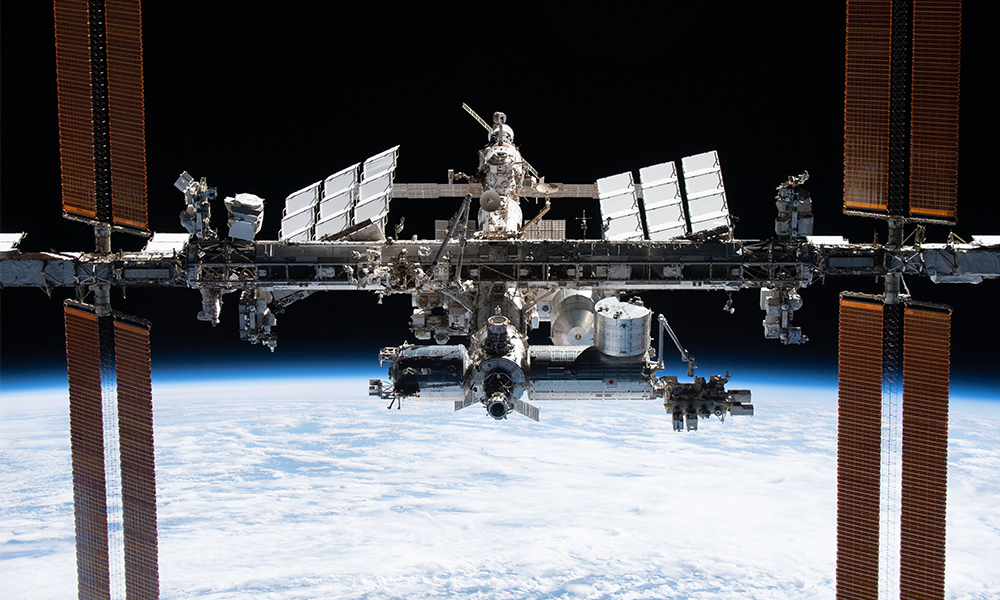
A spacewalk planned for Tuesday to repair a faulty antenna on the International Space Station was postponed indefinitely, NASA said, citing a “debris notification” it received for the orbiting research laboratory.
Two U.S. astronauts had been scheduled to venture outside the space station at 7:10 a.m. Eastern time (1210 GMT) to begin their work, facing what NASA officials had called a slightly elevated risk posed by debris from a Russian anti-satellite missile test this month.
But about five hours before the outing was to have commenced, NASA said on Twitter that the spacewalk had been called off for the time being.
“NASA received a debris notification for the space station. Due to the lack of opportunity to properly assess the risk it could pose to the astronauts, teams have decided to delay the Nov. 30 spacewalk until more information is available,” the space agency tweeted.
It was not made clear how close debris had come to the space station, orbiting about 250 miles (402 km) above the Earth, or whether it was related to the Russian missile test.
NASA TV had planned to provide live coverage of the 6-1/2-hour “extravehicular activity,” or EVA, operation by astronauts Thomas Marshburn and Kayla Brown. The outing would be the fifth spacewalk for Marshburn, 61, a medical doctor and former flight surgeon with two previous trips to orbit, and the first for Barron, 34, a U.S. Navy submarine officer and nuclear engineer on her debut spaceflight for NASA.
The objective is to remove a faulty S-band radio communications antenna assembly, now more than 20 years old, and replace it with a new spare stowed outside the space station.
According to plans, Marshburn was to have worked with Barron while positioned at the end of a robotic arm operated from inside the station by German astronaut Matthias Maurer of the European Space Agency, with help from NASA crewmate Raja Chari.
The four arrived at the space station on Nov. 11 in a SpaceX Crew Dragon capsule launched from the Kennedy Space Center in Cape Canaveral, Florida, joining two Russian cosmonauts and a NASA astronaut already aboard the orbiting outpost.
Four days later, an anti-satellite missile test conducted without warning by Russia generated a debris field in low-Earth orbit, and all seven crew members took shelter in their docked spaceships to allow for a quick getaway until the immediate danger passed, according to NASA.
The residual debris cloud from the blasted satellite has dispersed since then, according to Dana Weigel, NASA deputy manager of the International Space Station (ISS) program.
But NASA calculates that the remaining fragments continued to pose a “slightly elevated” background risk to the space station as a whole, and a 7% higher risk of spacewalkers’ suits being punctured, as compared to before Russia’s missile test, Weigel told reporters on Monday.
Although NASA has yet to fully quantify additional hazards posed by more than 1,700 larger fragments it is tracking around the station’s orbit, the 7% higher risk to spacewalkers falls “well within” fluctuations were previously seen in “the natural environment,” Weigel said.
Still, mission managers canceled several smaller maintenance tasks under consideration for Tuesday’s spacewalk, Weigel added.
Science & Technology
Apple loses top phonemaker spot to Samsung as iPhone shipments drop, IDC says

Apple’s (AAPL.O), opens new tab smartphone shipments dropped about 10% in the first quarter of 2024, hurt by intensifying competition by Android smartphone makers aiming for the top spot, data from research firm IDC showed on Sunday.
Global smartphone shipments increased 7.8% to 289.4 million units during January-March, with Samsung (005930.KS), opens new tab, at 20.8% market share, clinching the top phonemaker spot from Apple, Reuters reported.
The iPhone-maker’s steep sales decline comes after its strong performance in the December quarter when it overtook Samsung as the world’s No.1 phone maker. It’s back to the second spot, with 17.3% market share, as Chinese brands such as Huawei gain market share.
Xiaomi, one of China’s top smartphone makers, occupied the third position with a market share of 14.1% during the first quarter, read the report.
South Korea’s Samsung, which launched its latest flagship smartphone lineup – Galaxy S24 series – in the beginning of the year, shipped more than 60 million phones during the period.
Global sales of Galaxy S24 smartphones jumped 8%, compared to last year’s Galaxy S23 series during their first three weeks of availability, data provider Counterpoint previously said.
In the first quarter, Apple shipped 50.1 million iPhones, down from 55.4 million units it shipped same period last year, according to IDC.
Apple’s smartphone shipments in China shrank 2.1% in the final quarter of 2023 from a year earlier.
The drop underscores the challenges facing the U.S. firm in its third biggest market, as some Chinese companies and government agencies limit employees’ use of Apple devices, a measure that mirrors U.S. government restrictions on Chinese apps on security grounds.
The Cupertino, California-based company in June will hold its Worldwide Developers Conference (WWDC), where it will highlight updates to the software powering iPhones, iPads, and other Apple devices.
Investors are closely watching for updates on artificial intelligence development at Apple, which has so far spoken little about incorporating the AI technology into its devices. The company earlier this year lost the crown as the world’s most valuable company to Microsoft (MSFT.O), opens new tab, Reuters reported.
Science & Technology
China launch of relay satellite Queqiao-2 for lunar probe mission successful

China National Space Administration (CNSA) said on Friday its launch of a key signal relay satellite was a “complete success” and it would serve as the communication bridge for its future lunar probe missions for years to come, state media reported.
China launched the satellite Queqiao-2, which was named after a mythological bridge made of magpies, and two miniature satellites, Tiandu-1 and Tiandu-2, on March 20.
Queqiao-2 will be used as a communications bridge between the ground operations on earth and upcoming lunar probe missions on the far side of the moon until at least 2030.
The moon’s near side always faces earth. That means data transfers from the far side are impossible because there is no direct line of sight.
Queqiao-2 researcher and developer Xiong Liang described the satellite as “the main switch” of the whole fourth phase of lunar missions, according to state television CCTV.
“Only when the main switch is flipped on, all the communications can kick off,” Xiong said.
Queqiao-2 will orbit the moon and relay signals to and from the Chang’e-6 mission, which expected to be launched in May. The robotic Chang’e-6 probe will seek to retrieve samples from an ancient basin, acquiring lunar material from the moon’s hidden side for the first time.
Queqiao-2 will also be used as a relay platform for the Chang’e-7 lunar mission in 2026 and the Chang’e-8 mission in 2028.
The functions and performance of Queqiao-2 met mission requirements and it will be able to provide relay communication services for China’s lunar exploration projects and future lunar missions for China and other countries, said the CNSA, according to CCTV.
Queqiao-2 entered its targeted elliptical orbit on April 2 after a correction midway, near-moon braking and orbital manoeuvre around the moon, CNSA said.
The satellite has successfully communicated with Chang’e 4, which was the first spacecraft to perform a soft landing on the far side of the moon and is still carrying out its exploration mission. It also communicated with the Chang’e-6 probe while it is still on the ground earlier this month.
The successful launch of Queqiao-2 comes after the failed launch of another lunar spacecraft DRO-A/B satellites, which was intended to enter the moon’s distant retrograde orbit (DRO).
China has not released any information on whether or not the satellites can be retrieved.
(Reuters)
Science & Technology
Russia aborts planned test launch of new heavy-lift space rocket

Russian space officials on Tuesday aborted the test launch of a new heavy-lift rocket from its far-eastern launch pad.
The Angara-A5 rocket was scheduled to lift off from the Vostochny space launch facility at 0900 GMT Tuesday, but the launch was aborted two minutes before, AP reported.
Yuri Borisov, head of Roscosmos state space corporation, said the automatic safety system canceled the launch after registering a flaw in the oxidizer tank pressurization system.
He said the next launch attempt was set for Wednesday.
Tuesday’s launch was to be the fourth for the Angara-A5, a heavy-lift version of the new Angara family of rockets that has been developed to replace the Soviet-designed Proton rockets.
-

 Sport4 days ago
Sport4 days agoACL fever grows as fixtures finalized
-
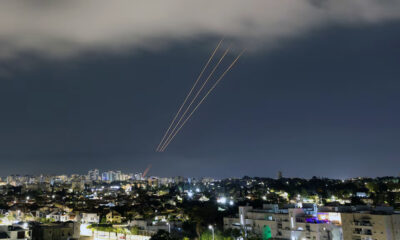
 World4 days ago
World4 days agoUS will not take part in any Israeli retaliatory action against Iran
-
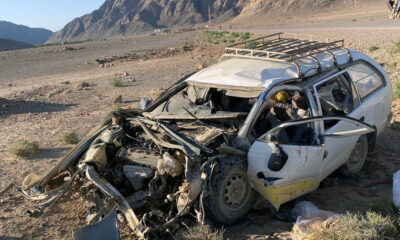
 Latest News4 days ago
Latest News4 days agoOver 50 people dead in traffic accidents over Eid
-

 Latest News4 days ago
Latest News4 days agoUS identifies Kabul airport suicide bomber
-

 Latest News4 days ago
Latest News4 days agoGood rains enable DABS to increase power production in Kabul
-

 Business4 days ago
Business4 days agoAfghanistan-Kazakhstan chamber of commerce opens in Herat
-
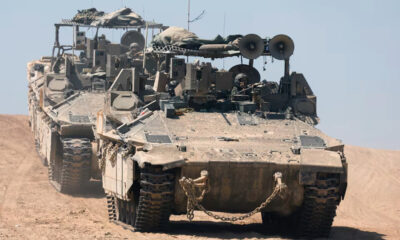
 World3 days ago
World3 days agoIsraeli military vows response to Iran attack as calls for restraint mount
-
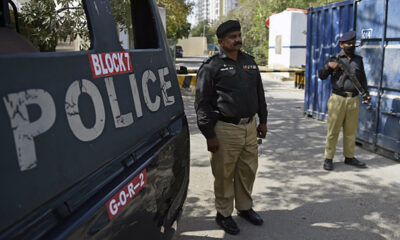
 Latest News3 days ago
Latest News3 days agoPakistani police give Afghans in Balochistan one day to leave
























